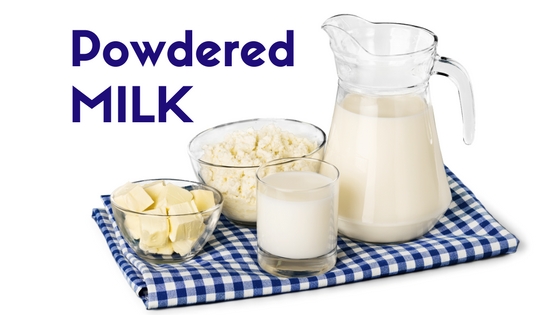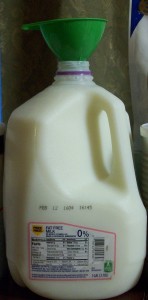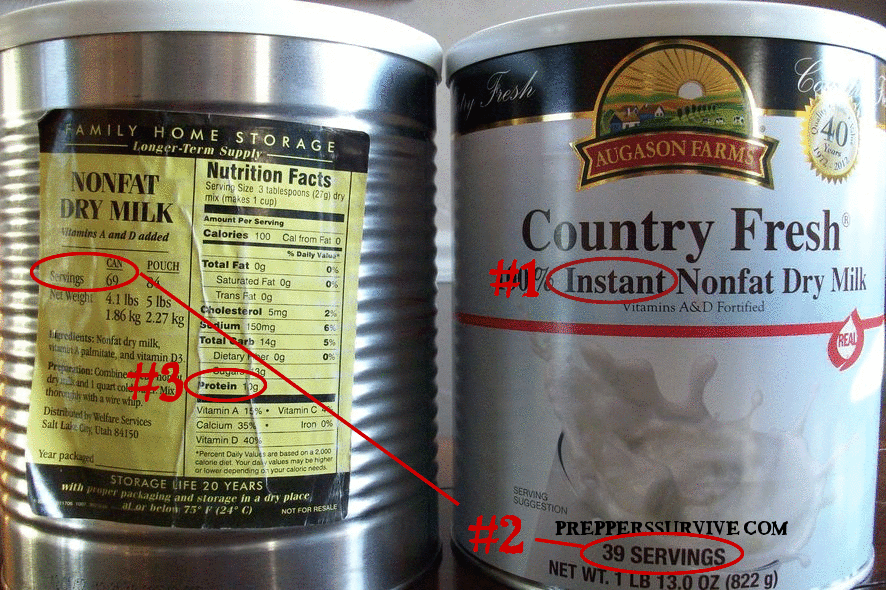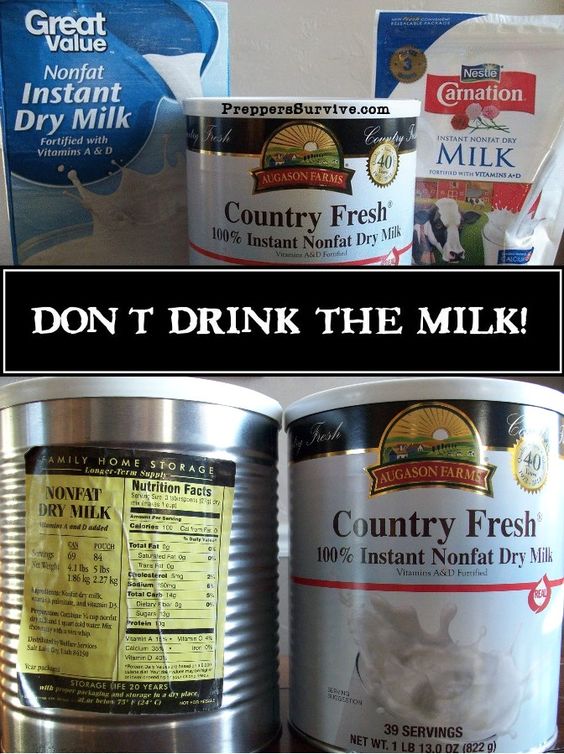
It took me a long time before I even considered purchasing powdered milk for food storage. First, I do NOT enjoy milk. It’s just not something you’ll find in my fridge. Second, my parents introduced me to powdered milk as a child, YUCK! My dad had a seasonal job at a cannery when I was growing up, so my mother would store what food she could for when he got laid off during the offseason.
 Unfortunately, she stored powdered milk and, bless her heart, when there was no money for milk, she would make a gallon of powdered milk and then add it to the empty store-bought milk container. Her unsuspecting children would add it to their cereal, then throw away the cereal and milk because they thought the milk went bad. It was heartbreaking to learn that we would drink it for the next couple of months. However, there are many powdered milk uses.
Unfortunately, she stored powdered milk and, bless her heart, when there was no money for milk, she would make a gallon of powdered milk and then add it to the empty store-bought milk container. Her unsuspecting children would add it to their cereal, then throw away the cereal and milk because they thought the milk went bad. It was heartbreaking to learn that we would drink it for the next couple of months. However, there are many powdered milk uses.
Powdered Milk Uses
Its hard to get over childhood traumas but time has a way of helping us to overcome and heal. With time I have discovered:
- The taste of powdered milk has improved since I was a kid. There are several companies that make an ok powdered milk (Bob’s Red Mill, Nestle, Augason Farms). Here is a link to an article Utah Preppers wrote about which powdered milk tastes best.
- It is an important staple in adding valuable nutrients to food storage meals. Powdered milk typically has Calcium, Vitamin D, and other nutrients which nourish and strengthen bones.
- It is a good source of protein and calories. It’s one of the less-expensive means of adding protein to your food storage. Protein & calories can keep your body strong during hard times so having an easy way to add both to every meal is worth considering.
- There are so many better uses for powdered milk than drinking it. One of my mother-in-law’s friends, whose name is Terry Clark, shares her message: “Don’t Drink the Milk!” at Preparedness Fairs. She has discovered ways to turn powdered milk into something YUMMY. Her recipes are linked at the bottom of this post.
– – – – – – – – – – – – –
What You Need to Know About Powdered Milk

-
- There is a big difference between Regular Nonfat Dry Milk and Instant Nonfat Dry Milk. The Regular can be turned into yogurt, cream cheese, and sour cream, the Instant cannot (see recipes link below).
- Typically there are more servings in the Regular than in the Instant, almost double the servings.
- There is more protein per serving size in the Regular than in the Instant. In the picture above, the Regular has 10 grams and (not shown) the Instant has 7 grams.
- However, if you plan on drinking it the Instant tends to taste better than Regular.
- Instant powdered milk can be found at most grocery stores, usually near items like coffee creamer. I have only been able to find Regular (or non-instant) powdered milk online or at emergency preparedness stores.
- As a side note, instant powdered milk can be mixed with a spoon. Non-instant (or spoken of in this article as regular) is best mixed with water in a blender to prevent lumps.
DO NOT USE YOUR POWDERED MILK TO MAKE MILK.
THAT’S A HORRIBLE WASTE OF PERFECTLY GOOD WATER!!!
Click Here for Recipes Using Powdered Milk
Thanks for visiting Preppers Survive. Before you leave subscribe to our newsletter. If you enjoyed this article, please share it on your favorite social media.



Nestle make a powdered WHOLE MILK PRODUCT CALLED NIDO that is vastly more tasty than any of the non-fat powdered milk products–it almost tastes like “real” milk–I used some making mac and cheese just yesterday that I dare anyone to detect that it was not made with fresh whole milk.
Try it, you’ll like it–and the difference between it and those “dishwater milk” nonfat concoctions is immediately evident, from the first sip.
And no, I don’t work for Nestle, or own their stock……….
Thrive has a freeze dried milk which tastes very good.